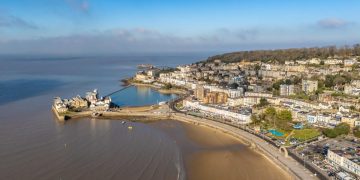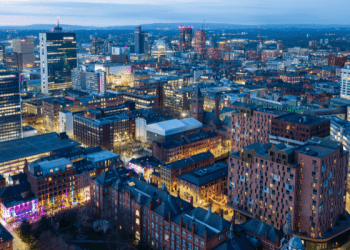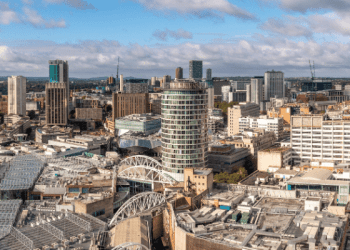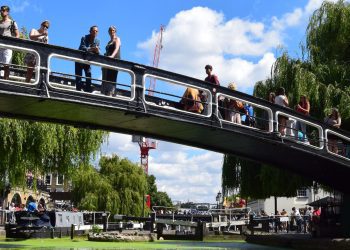Feeling safe is a factor many HomeViews reviewers mention when rating their homes. If you’re looking to move to the capital or relocate from one part to another, we have the latest information on the safest places to live in London in 2024. Discover the London areas with the lowest crime rates in this simple guide.
Where’s safest in London in 2024?
After nearly three years of major disruption from the pandemic, life has returned to a more ‘normal’ rhythm in the capital. For an in-depth look at how the pandemic affected crime rates, and what makes one area safer than others, scroll down past the list once you’re finished.
For now, however, we can move right along to discovering which of the London boroughs are the safest overall.
10 safest places to live in London in 2024
Discover which parts of the capital offer the greatest peace of mind when it comes to safety. Our list of the top 10 safest places to live in London was drawn from Crimerate data for Greater London covering December 2023 to April 2024. In each case, you can see the number of crimes committed per 1,000 people living in that borough.
10: Wandsworth – 110 crimes per 1,000 people

Wandsworth is the 10th safest borough in London and among the safest inner London boroughs for recorded crime. It also enjoys plenty of excellent school options and the wide open green spaces that help foster safety. Wandsworth and Clapham Commons are a delight to explore and easy access to the river is an added bonus.
9: Havering – 100 crimes per 1,000 people

Quiet, prosperous and with no shortage of excellent schools, Havering is still one of the most affordable boroughs in London. It’s also one of the largest boroughs at 40 square miles, but half of that is situated in the Metropolitan Green Belt. This is a big plus for boosting desirability and long-term safety levels.
8: Barnet – 91 crimes per 1,000 people

Although quieter than most London boroughs, Barnet boasts excellent transport links, a profusion of parks and some of the highest-performing schools in the capital. Annual rates of violent crime are frequently recorded as well below the national average.
7: Bromley – 88 crimes per 1,000 people

Bromley has the best of both worlds, as it’s close enough to Central London to be lively and convenient, but retains its quiet, peaceful charm that families love. Enjoying a falling crime rate and an abundance of good parks, schools and community spirit, it’s a consistently popular borough for those who want security and safety without life being dull.
6: Bexley – 84 crimes per 1,000 people

As part of the Thames Gateway area, Bexley has benefited greatly from urban regeneration. Overflowing with parks, cycle routes and a beautiful lake, Bexley has all the charm of ‘country-city living’ and a solidly maintained reputation for safety. Burglary is lower here than most London boroughs and violent crime is well below the UK average. This makes Bexley one of the safest places to live in London.
5: Merton – 83 crimes per 1,000 people

The home of Wimbledon, Merton combines culture and heritage with a cosmopolitan buzz. This rises to a fever pitch each summer when the tournament rolls around. Despite the annual influx of tourists and tennis lovers, Merton maintains a reliably safe and welcoming atmosphere even at its busiest.
4: Kingston upon Thames – 80 crimes per 1,000 people

A recurring theme of this list of safest boroughs is their proximity to lakes and the River Thames. The river runs through Kingston upon Thames for three miles, playing host to a vibrant arts scene and uniquely chic café culture.
3: Sutton – 80 crimes per 1,000 people

Sitting just north of the Surrey Downs, Sutton is a walker’s paradise as it offers gorgeous rolling hills and unforgettable views that few other boroughs can compete with. The town centre is the hub and heart of Sutton, notable for its strong community feel. The borough routinely pulls 90%+ figures for happiness, satisfaction and feeling safe whenever its residents are surveyed.
“Before moving, we meticulously researched places where school offsted scores should be high and where crime rates should be low. Sutton came out from many resources.“
Mehmet Ozaksu, Verified Resident – The Well House, SM1, May 2020
2: Harrow – 78 crimes per 1,000 people

Home to one of the nation’s top independent schools, Harrow is tucked away in the northwest of the capital. This gives it a quieter, calmer appeal compared to the electric buzz of the city’s central boroughs. Harrow is blessed with a winning combination of beautiful historic architecture, open green spaces and, of course, truly outstanding schools. Its solid transport links to central London don’t hurt either!
1: Richmond upon Thames – 75 crimes per 1,000 people

Still number one for London’s lowest crime rate, Richmond is the safest borough in the capital. This perhaps isn’t so surprising, since it feels more like a calm, welcoming village than a London borough. With beautiful riverside cafes, shops, pubs, 100 parks and 140 hectares of Metropolitan Green Belt area, Richmond’s is the place to combine the London lifestyle with idyllic rural relaxation.
If you’re looking more seriously at settling down in London’s safest borough, then be aware that its outstanding reputation comes at a price. According to the latest data from Rightmove (past 12 months up to May 2024), properties in Richmond Upon Thames had an overall average price of around £850,000.
The most popular property type sold in the area last year was flats, which went for an average price of just over £500,000. Terraced properties are closer to £870,000, while semi-detached houses top £1 million. Prices are holding steady in the area overall but are sneaking up by 6% compared to the peak pandemic year of 2021.
To give you a taste of what this exceptional borough has to offer, below are a selection of top-rated developments in Richmond upon Thames. For a full exploration of all HomeViews’ listed properties, just click the area guide below.
What crimes trends are increasing in London?
As with any area, there are trends in the types of crime being committed. These can be impacted by policing, surveillance, social programmes and various other factors.

In London in early 2024, some of the types of crimes getting worse (i.e.: more common) include anti-social behaviour, drug offences and public order offences. These types of crime are increasing across the capital, though it’s worth mentioning the changes over time are very minor.
Theft and violent/sexual offences are also increasing in London, though prosecution rates for these crimes are improving.
What crimes are decreasing in London?
While some types of crime are increasing in the capital, others are on the decline. Incidences of bicycle theft are becoming more rare in London, while burglary rates are also dropping. Additionally, weapons possession offences are down by around a quarter since 2019. Vehicle based crime is also down, as the Metropolitan Police are having more success in tackling criminals using scooters with their “tactical contact” methods.
Where are the most dangerous places in London?
According to the most recent crime stats, the three most dangerous places in London are, in order, Hackney, then Westminster, then Southwark. These are the three London boroughs with the highest ‘Crime Risk Scores’. However, it’s important to note that crime stat averages do not always tell the full story.
Certain kinds of crime can be higher or lower in certain areas; for example, Westminster has a much higher rate of “theft from the person” crimes compared to the London-wide average. This may be because the area attracts lots of tourists and high net-worth individuals who are targeted by pickpockets.
In any case, it is always important to be aware of the historical crime rates and risk factors in your area. If you do a little research before moving to a new home, you can ensure that you are not likely to be unduly at risk.

What makes areas safer than others?
Feeling safe within any city is more complicated than simple crime statistics. While low levels of crime and effective policing are essential for making the people who live there feel safe, other factors make a big difference too. The following are all important considerations to factor into your decision about the safety of where you choose to live.
Education
Better schooling leads to greater opportunities for young learners, making them feel more invested in society and their future. Good schools and educational facilities therefore literally make areas safer, as they improve the lives of people living there.
Arts and culture
It might not seem like it, but art can have a tangible impact on an area’s safety. Places with a thriving arts scene make residents feel more positive and uplifted, which leads to them feeling safer while often helping to reduce actual crime levels. Urban revitalisation and beautification are also usually part of overall community investment plans to improve the area as a whole.
Green spaces
While crimes still take place in parks, green spaces are vital for boosting an area’s sense of community, health and wellbeing. All of these are important in influencing safety in society. As you’ll see from our list, access to green spaces factors heavily in the appeal of all London’s safest boroughs.
Transport links
While busy train and underground stations do experience crime issues, having good transport links typically helps improve an area’s safety. This is because better access to public transport in London encourages more investment in the area, boosting its desirability and adding opportunities for those who live there. Also, smarter public transport systems are more likely to be better resourced in terms of providing safety and security for their passengers.
Read more
HomeViews is the only independent review platform for residential developments in the UK. Prospective buyers and tenants use it to make an informed decision on where to live based on insights from carefully verified resident reviews. Part of Rightmove since February 2024, we’re working with developers, house builders, operators, housing associations and the Government to give residents a voice, recognise high performers and to help improve standards across the industry.
















































